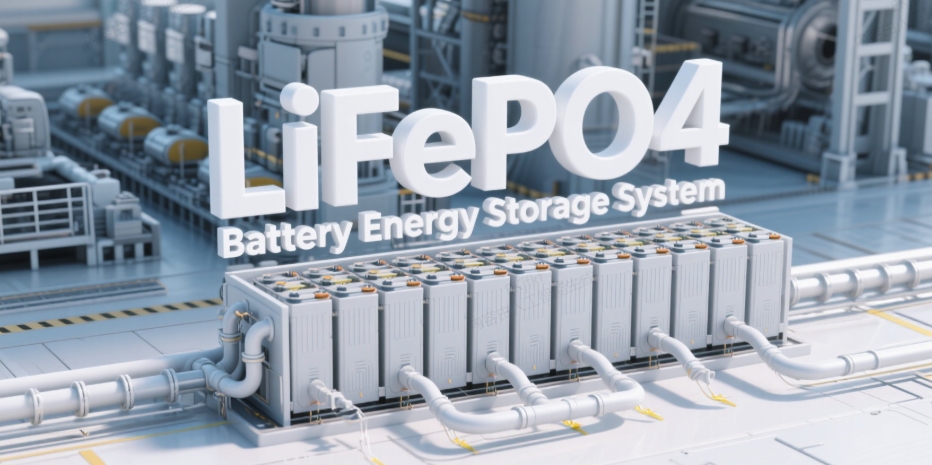The Comprehensive Guide to Lithium Iron Phosphate (LiFePO4) Batteries: Benefits, Applications, and Future Trends
Introduction
Lithium Iron Phosphate (LiFePO4 or LFP) batteries have emerged as a leading energy storage solution, offering superior safety, longevity, and efficiency compared to traditional lithium-ion alternatives. As Voltsmile continues to innovate in sustainable energy solutions, understanding the advantages and applications of LiFePO4 technology is crucial for industries ranging from electric vehicles (EVs) to renewable energy storage.
This article explores the chemistry, benefits, applications, and future trends of LiFePO4 batteries, providing valuable insights for businesses and consumers alike.

1. What is Lithium Iron Phosphate (LiFePO4)?
LiFePO4 is a type of lithium-ion battery that uses iron phosphate (FePO4) as the cathode material and a graphite carbon electrode with a metallic backing as the anode. Unlike other lithium-ion chemistries (e.g., NMC or LCO), LiFePO4 batteries are known for their thermal stability, low risk of thermal runaway, and long cycle life.
Key Chemical Properties:
- Stable Crystal Structure: The olivine structure of LiFePO4 provides excellent thermal and chemical stability.
- High Thermal Tolerance: Operates safely at high temperatures (up to 60°C) without degradation.
- Low Energy Density (but High Power Density): While slightly lower in energy density than NMC batteries, LiFePO4 excels in power delivery and longevity.
2. Advantages of LiFePO4 Batteries
2.1 Enhanced Safety
LiFePO4 batteries are inherently safer than other lithium-ion variants due to their resistance to overheating and combustion. This makes them ideal for applications where safety is paramount, such as:
- Véhicules électriques (VE)
- Solar energy storage
- Medical devices
2.2 Long Cycle Life
Avec 2,000–5,000 charge cycles (compared to 500–1,000 for lead-acid batteries), LiFePO4 batteries offer a significantly longer lifespan, reducing replacement costs.
2.3 Eco-Friendly & Non-Toxic
Unlike cobalt-based batteries, LiFePO4 does not contain harmful heavy metals, making it a sustainable choice for green energy solutions.
2.4 Fast Charging & High Efficiency
LiFePO4 batteries support fast charging (up to 80% in under an hour) and maintain high energy efficiency (95 %+), minimizing energy loss.
3. Applications of LiFePO4 Batteries
3.1 Electric Vehicles (EVs & E-Bikes)
Due to their safety and durability, LiFePO4 batteries are widely used in:
- Electric cars (Tesla, BYD, and other manufacturers are adopting LFP)
- Electric buses & commercial vehicles
- E-bikes & scooters
3.2 Renewable Energy Storage
LiFePO4 is ideal for solar power systems et off-grid energy storage due to:
- Deep discharge capability (can be discharged up to 90% without damage)
- Long-term reliability in fluctuating temperatures
3.3 Industrial & Marine Applications
- UPS (Uninterruptible Power Supply) systems
- Marine batteries (resistant to corrosion and vibration)
- Telecom backup power
4. Future Trends in LiFePO4 Technology
4.1 Increasing Adoption in EVs
Major automakers are shifting to LiFePO4 due to cost efficiency and safety, reducing reliance on cobalt and nickel.
4.2 Advancements in Energy Density
Research is improving LiFePO4’s energy density while maintaining its safety benefits, making it competitive with NMC batteries.
4.3 Integration with Smart Grids & AI
AI-driven battery management systems (BMS) are optimizing LiFePO4 performance in smart grids and IoT applications.
Conclusion
Lithium Iron Phosphate (LiFePO4) batteries represent the future of energy storage, combining safety, longevity, and sustainability. As Voltsmile continues to lead in innovative battery solutions, LiFePO4 technology will play a pivotal role in powering electric mobility, renewable energy, and industrial applications.
For businesses seeking reliable, long-lasting, and eco-friendly energy storage, LiFePO4 batteries are the optimal choice.
